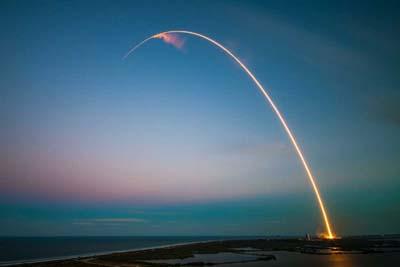
Space development: Star Wars or Star Trek?
Andrey Kortunov
During a recent regular press briefing in Washington, John Kirby, White House National Security Communications Advisor, expressed concerns about Russia allegedly working on new anti-satellite weapons. He did not specify the type of weapons, leading some journalists to suggest that the Biden administration was genuinely concerned about a futuristic nuclear missile being deployed in outer space by Russia. Kirby chose not to provide further details, stating that Moscow’s efforts so far had not constituted “an active capability.” He also promised a “direct diplomatic engagement with Russia” as well as consultations with key US allies and “other countries around the world who have interests at stake.”
The media event in the James Brady Press Briefing Room heightened the suspense and fueled public interest in the already not so new, but still exciting, topic of “star wars.” Indeed, the potential deployment of nuclear weapons in space could lead to a significant shift in the global balance of military power. Disabling an adversary’s satellites could be achieved by simply blinding them with radiation from a remote nuclear explosion.

However, such actions would be a direct violation of the 1967 Outer Space Treaty, formally known as the Treaty on Principles Governing the Activities of States in the Exploration and Use of Outer Space, including the Moon and Other Celestial Bodies. Negotiated and drafted under the auspices of the United Nations, the Treaty was opened for signature in Moscow, London and Washington on January 27, 1967, and entered into force on October 10, 1967. Today, an overwhelming majority of states in the world are either full members, or signatories, to the Treaty, including all major space-faring nations.
The document not only bans the deployment of nuclear weapons and other weapons of mass destruction in space, but also prohibits the establishment of military bases, testing of weapons and conducting military maneuvers on celestial bodies. Nonetheless, it does not directly ban all military activities in space, the creation of military space forces, or the placement of conventional weapons in space. Since 1967 many countries, including the US, Russia, China and India have conducted a variety of unhindered tests of anti-satellite weapons prototypes. So far, the most visible impact of these tests has been the pollution of the near-Earth space with a lot of debris that can become a serious inconvenience for all the objects on the near-Earth orbits, including space stations.
The Treaty does not impose specific restrictions on the peaceful use of nuclear energy in space. The Russian Space Agency is now proceeding with an ambitious plan to create an unmanned nuclear-powered spaceship for Solar system exploration (the Zeus project). However, the first orbital flight test of the reactor is planned for no earlier than 2030, which means the Biden Administration has no immediate reason to worry about this project at this stage.
Of course, if you put aside the grossly overrated nuclear dimension and look into the future of technologies, you will have every reason to be concerned about what might happen someday in space around our planet. All of us depend on satellites more and more. Today, they are widely used by both public and private sectors, and every year thousands of satellites arrive in already crowded orbits. To blind even a few of them – for example, with high-precision laser beams – would mean inflicting immense strategic, economic, social or other damage upon any country, damage comparable to that of direct military aggression. Be mindful that space-based lasers can be used not only against satellites, but also against other targets, including ballistic and hypersonic missiles.
Even if we assume that a direct military clash in space can be avoided, a space-related arms race is going to be a major factor feeding mistrust and mutual suspicions, obstructing international cooperation and depleting valuable resources needed for peaceful space programs that could otherwise benefit all humankind. In April 2022 the Biden administration announced a unilateral moratorium on anti-satellite kinetic missile tests, calling on other space-faring nations to follow suit. This decision may help reduce the amount of space debris. However, the kinetic missile tests moratorium does not include R&D or actual deployment of space weapons. It does not even include any other type of test, such as computer simulation. To deal with the problem at its root, we need to apply a more comprehensive approach.
The good news is that it is not too late to start multilateral negotiations on space-related matters. Over the last 20 years, China and Russia promoted the idea of complete demilitarization of outer space. On February 12, 2008, the two nations submitted a draft treaty on banning weapons in outer space to the Geneva Conference on Disarmament. According to Beijing and Moscow, the Treaty should be comprehensive, legally binding, subject to appropriate verification procedures in participating countries and accompanied by credible mechanisms of implementation verification. Needless to say, to conclude such a treaty would be a non-trivial task, particularly under the current challenging geopolitical circumstances, but even the first steps in this direction would already make a lot of difference in the overall political atmospherics around the space weapons problem.
The two most famous US space movie sagas are Star Wars and Star Trek. In many ways, they look similar to each other, but there is at least one fundamental difference between the two. Star Wars is about the eternal struggle between good and evil, about a black-and-white world, in which characters have to decide whether to go to the light side or the dark side. Star Trek is about exploration of the limitless universe, about the quest for knowledge and about how to understand and accept alien cultures. If humankind is committed to its survival and prospering, it has to choose the Star Trek path over the Star Wars path.
The writer is the academic director of the Russian International Affairs Council
